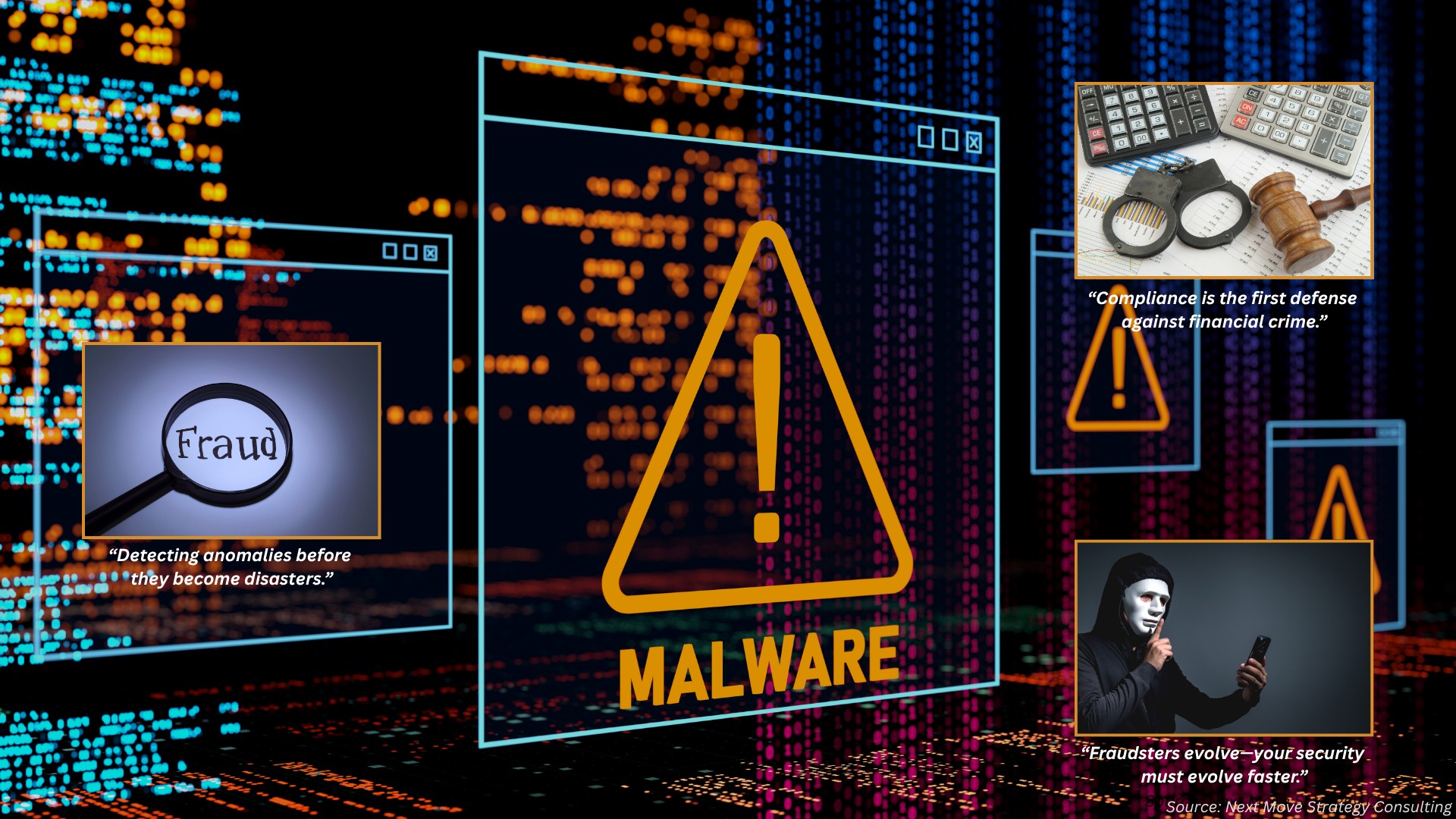How AI is Transforming Fraud Detection & Prevention
Published: 2025-09-15

Introduction
In today's interconnected digital world, the significance of robust fraud detection and prevention measures cannot be overstated. As businesses and individuals rely more on online transactions, cybercriminals continually adapt and innovate to exploit vulnerabilities in the digital landscape. To stay one step ahead, the field of fraud detection and prevention has undergone a significant transformation by leveraging cutting-edge technologies and strategies.
Fraud detection and prevention refer to proactive measures, strategies, and technologies implemented by individuals, businesses, financial institutions, and organizations to identify, mitigate, and deter fraudulent activities. These efforts aim to safeguard assets, sensitive information, and the integrity of systems and processes from various forms of fraudulent behavior, including identity theft, payment fraud, cyber-attacks, and unauthorized access. In this article, we will delve into the key trends shaping the landscape of the fraud detection and prevention market.
1. Harnessing the Power of Machine Learning and AI
One of the most notable trends in recent years has been incorporating machine learning (ML) and artificial intelligence (AI) into fraud detection systems. AI-powered systems continuously monitor transactions and user behaviors, allowing the identification of suspicious activities. This proactive approach allows immediate action, such as blocking potentially fraudulent transactions, thus reducing potential financial losses.
ML is instrumental in fraud detection and prevention due to its capacity for anomaly detection and pattern recognition. These models continuously monitor transactions in real-time, swiftly identifying suspicious activity and reducing false positives. ML's adaptability and ability to uncover hidden connections in data make it an invaluable tool in the ongoing battle against fraud across various industries.
For instance, in September 2023, McAfee introduced AI-driven scam protection designed to detect, identify, and alert users about potential online scams. This functionality additionally safeguards users from accidentally engaging with harmful links. The feature aims to counter the use of AI by threat actors to create convincing and personalized scams at scale. This capability extends to scrutinizing malicious links in text messages, emails, search outcomes, and social media platforms.
2. Real-Time Monitoring for Swift Responses
Real-time monitoring in fraud detection and prevention involves the continuous and immediate analysis of various data sources and activities. This real-time analysis allows for the swift identification of fraudulent or suspicious behavior as it occurs. When potential fraud is detected, instant alerts are generated, enabling rapid response and mitigation efforts. This proactive approach is essential in preventing financial losses and safeguarding against evolving fraud tactics in today's digital landscape.
For instance, in June 2023, Jack Henry introduced Payrailz Fraud Monitor, an AI-driven and cloud-native component integrated into the Payrailz Digital Payments Platform. This feature offers real-time fraud detection capabilities at the onset of payment transactions. It is a flexible and proprietary solution that can be tailored to specific needs, extending its support to person-to-person (P2P) payments, consumer and business bill payments, and account-to-account (A2A) outbound external transfers. All of these are powered by the Payrailz Digital Payments Platform.
3. Behavioral Analytics
Behavior analytics is instrumental in fraud detection and prevention by serving as a proactive and dynamic strategy. Initially, it establishes a baseline of typical behavior for individuals or entities within a system, drawing insights from historical data and considering factors such as transaction patterns, location, and user conduct. Subsequently, it excels at identifying anomalies or deviations from this baseline. When unusual activities, such as unexpected transactions or access from unfamiliar locations, are detected, behavior analytics systems generate alerts for further investigation. This method allows organizations to spot potential fraud in real-time, enabling swift responses to mitigate risks. Moreover, behavior analytics continually adapts and evolves to incorporate new data, making it a valuable tool in combating increasingly sophisticated and changing fraudulent tactics.
For instance, in September 2022, TransUnion launched TruValidate Device Risk with Behavioral Analytics, fortified by NeuroID. It establishes trust and uses device recognition, context, attributes, and user behavior. Users can tap into a global network of 6,000 fraud analysts, 10 billion recognized devices, and more than 100 million fraud reports. It is configurable, allowing tailored risk assessment by combining device intelligence and applicant behavior signals powered by NeuroID.
4. The Rise of Biometric Authentication
Biometric authentication methods, such as fingerprint and facial recognition, are gaining traction in fraud prevention. Biometrics offers a higher level of security by verifying an individual's unique physical characteristics, making it difficult for fraudsters to impersonate someone else. Biometric authentication is employed in not only mobile devices but also various industries, including finance and healthcare.
For instance, in September 2022, Self, the Web3 fraud prevention platform, initiated its beta phase to empower individuals in crafting decentralized digital ID applications with biometric features. Based on blockchain technology, the Self network is engineered to address fraud issues by seamlessly integrating digital identity, data ownership, and secure end-to-end encrypted communications.
5. Blockchain for Identity Verification
The integration of blockchain technology into identity verification processes has profound implications for the fraud detection and prevention market. By leveraging blockchain's inherent security features, immutability, and transparency, fraud detection systems can significantly enhance their ability to combat fraudulent activities. The tamper-proof nature of blockchain ensures the accuracy and integrity of identity data, reducing the chances of fraudulent identities slipping through.
Moreover, real-time verification powered by blockchain can provide fraud detection systems with up-to-date and trustworthy identity information. This minimizes the risk of false positives and enables more precise and effective detection of fraudulent transactions. As the need for robust fraud prevention measures continues to grow in an increasingly digital world, blockchain integration offers a promising avenue for bolstering security and trust in identity-related processes. This synergy between blockchain and fraud prevention is poised to reshape how organizations safeguard against fraudulent activities.
For instance, in October 2022, Mastercard launched Crypto Secure, which uses advanced AI algorithms to assess the risk of illegal activity from crypto merchants on its network. Using blockchain data and other sources to improve fraud detection and prevention strengthens the security of cryptocurrency transactions and the financial system.
Author’s Viewpoint
The future of fraud detection and prevention promises a proactive, dynamic, and highly secure landscape, due to the innovative technologies and strategies outlined in the article. Moreover, geopolitical conflicts often lead to increased cyber-attacks and fraudulent activities. Hacktivist groups and state-sponsored actors may exploit the chaos and uncertainty surrounding such conflicts to launch cyber-attacks, including phishing campaigns, ransomware attacks, and identity theft.
This highlights the importance of robust fraud detection systems that can identify and respond to emerging threats swiftly. For example, in February 2022, Ukraine launched an 'IT army' to fight Russian cyber-attacks. Ukraine established a hacker underground to assist in safeguarding vital infrastructure and carrying out cyberwarfare operations against Russian forces. Moreover, businesses and individuals navigate an increasingly interconnected digital world. These advancements offer valuable tools in the ongoing battle against fraud and cybercrime, which creates ample growth opportunities for the market in the coming years.
About the Author
 Sikha Haritwal is a researcher with more than 3 years of experience. She has been keeping a close eye on several industry verticals, including Banking, Financial Services, and Insurance (BFSI), personal care products, and consumer electronics. She has avid interest in writing news articles and hopes to use blog as a platform to share her knowledge with others. When she is not following industry updates and trends, she spends her time reading, writing poetry, cooking, and photography.
Sikha Haritwal is a researcher with more than 3 years of experience. She has been keeping a close eye on several industry verticals, including Banking, Financial Services, and Insurance (BFSI), personal care products, and consumer electronics. She has avid interest in writing news articles and hopes to use blog as a platform to share her knowledge with others. When she is not following industry updates and trends, she spends her time reading, writing poetry, cooking, and photography.
About the Reviewer
 Sanyukta Deb is a seasoned Content Writer and Team Leader in Digital Marketing, known for her expertise in crafting online visibility strategies and navigating the dynamic digital landscape. With a flair for developing data-driven campaigns and producing compelling, audience-focused content, she helps brands elevate their presence and deepen user engagement. Beyond her professional endeavors, Sanyukta finds inspiration in creative projects and design pursuits.
Sanyukta Deb is a seasoned Content Writer and Team Leader in Digital Marketing, known for her expertise in crafting online visibility strategies and navigating the dynamic digital landscape. With a flair for developing data-driven campaigns and producing compelling, audience-focused content, she helps brands elevate their presence and deepen user engagement. Beyond her professional endeavors, Sanyukta finds inspiration in creative projects and design pursuits.
















Add Comment